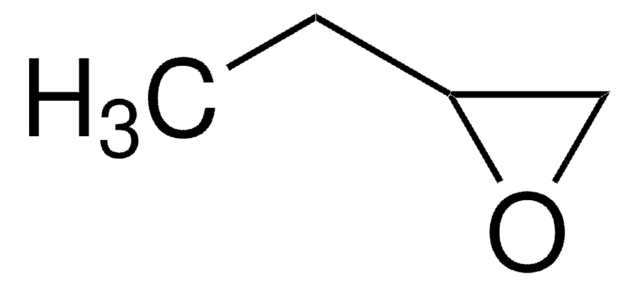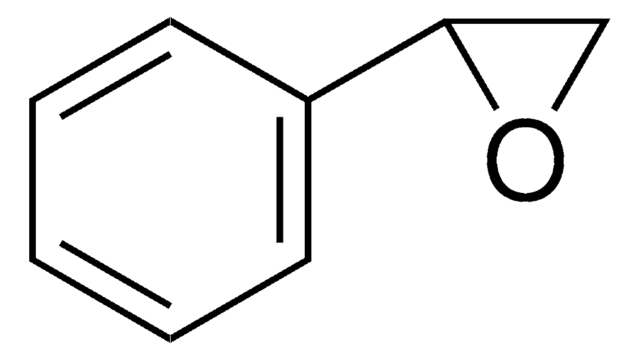8.20551
1,2-Epoxybutane
for synthesis
Synonym(s):
1,2-Epoxybutane, Ethyloxirane, 1,2-Butylene oxide
About This Item
Recommended Products
vapor pressure
1005 hPa ( 63 °C)
Quality Level
assay
≥99.0% (GC)
form
liquid
autoignition temp.
370 °C
potency
500 mg/kg LD50, oral (Rat)
1743 mg/kg LD50, skin (Rabbit)
expl. lim.
1.7-19 % (v/v)
pH
7 (20 °C, 50 g/L in H2O)
bp
63 °C/1013 hPa
mp
-130 °C
transition temp
flash point -26 °C
solubility
86.8 g/L
density
0.83 g/cm3 at 20 °C
storage temp.
2-30°C
InChI
1S/C4H8O/c1-2-4-3-5-4/h4H,2-3H2,1H3
InChI key
RBACIKXCRWGCBB-UHFFFAOYSA-N
Application
- Efficient catalysis of CO2 cycloaddition: 1,2-Epoxybutane is utilized in the synthesis of hydroxy-rich covalent organic frameworks, proving effective in catalyzing CO2 cycloaddition. This application supports environmental sustainability efforts through the conversion of carbon dioxide into useful compounds (Pang et al., 2023).
- Strain-release reagent synthesis: Highlighting its versatility as a chemical intermediate, 1,2-Epoxybutane is used in one-pot syntheses of strain-release reagents from methyl sulfones. This research opens new avenues in synthetic chemistry for creating novel organic compounds efficiently (Jung and Lindsay, 2022).
Analysis Note
Density (d 20 °C/ 4 °C): 0.830 - 0.831
Identity (IR): passes test
signalword
Danger
Hazard Classifications
Acute Tox. 4 Dermal - Acute Tox. 4 Inhalation - Acute Tox. 4 Oral - Carc. 2 - Eye Irrit. 2 - Flam. Liq. 2 - Skin Irrit. 2 - STOT SE 3
target_organs
Respiratory system
Storage Class
3 - Flammable liquids
wgk_germany
WGK 1
flash_point_f
5.0 °F - closed cup
flash_point_c
-15 °C - closed cup
Certificates of Analysis (COA)
Search for Certificates of Analysis (COA) by entering the products Lot/Batch Number. Lot and Batch Numbers can be found on a product’s label following the words ‘Lot’ or ‘Batch’.
Already Own This Product?
Find documentation for the products that you have recently purchased in the Document Library.
Our team of scientists has experience in all areas of research including Life Science, Material Science, Chemical Synthesis, Chromatography, Analytical and many others.
Contact Technical Service











